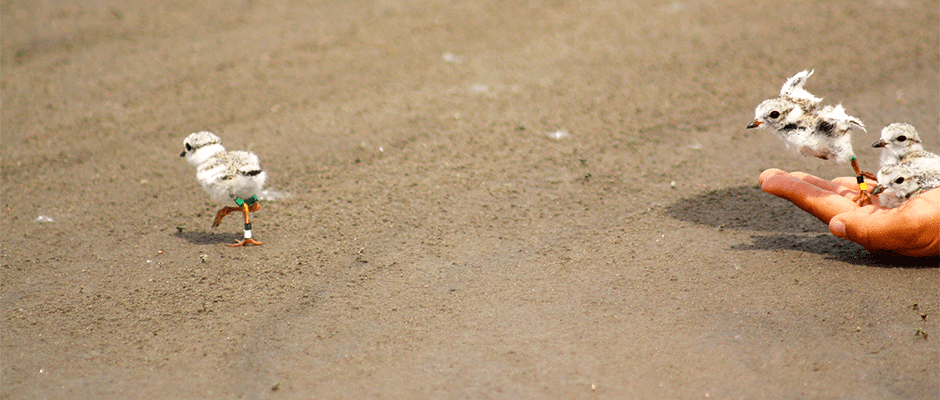Share this article
For plovers, manmade habitat falls short of the real thing
Efforts to use manmade habitat to help conserve threatened piping plovers (Charadrius melodus) on the Missouri River have helped, but they fell short of the work that nature would do, according to a recent study.
Historically, the Missouri was a dynamic system as it flowed from South Dakota to Nebraska, said Kelsi Hunt, a research associate for the Virginia Tech Shorebird Program and lead author of the study on the shorebirds published in The Condor: Ornithological Applications. It experienced floods, which created sandbar habitat for the plovers.
But in the mid-1900s, six dams built on the river made flooding less frequent, reducing piping plover habitat. In response to low population numbers, the Army Corps of Engineers created artificially engineered sandbars for the plovers between 2004 and 2009.
Hunt and her colleagues were looking at the nesting success and survival of plovers on these engineered sandbars when, in 2010 and 2011, the river flooded again. The high waters created natural habitat for the plovers and allowed the team to compare the birds’ success on these new natural sandbars to their success on the engineered sandbars.
Over 10 years, the team traveled to sandbars by boats to locate nests, returning every two or three days to check if the nests hatched or failed. They uniquely marked the birds to look at adult and chick survival.
Prior to the flood, researchers found, plovers on the engineered sandbars had high nest success and chick survival for a year before the numbers fell. After the flood, plovers on the natural sandbars had higher nest success, and it stayed consistently high for three years. So did chick survival and reproductive output, leading to population growth.
The engineered sandbars weren’t providing enough habitat, Hunt concluded.
“There wasn’t anything wrong with engineered sandbars,” she said. “But there wasn’t enough habitat to foster high reproductive output and attain sustained population growth.”
Engineered sandbars may be more effective if more habitat is created, and if they’re built close to past natural sandbars and source populations, she said.
“I hope that in terms of the Missouri River, the research could help guide future management strategies,” Hunt said.
Header Image: A researcher releases piping plover chicks in the Missouri River. Piping plovers prefer sandbars after flooding over engineered sandbars. Diane Borden








